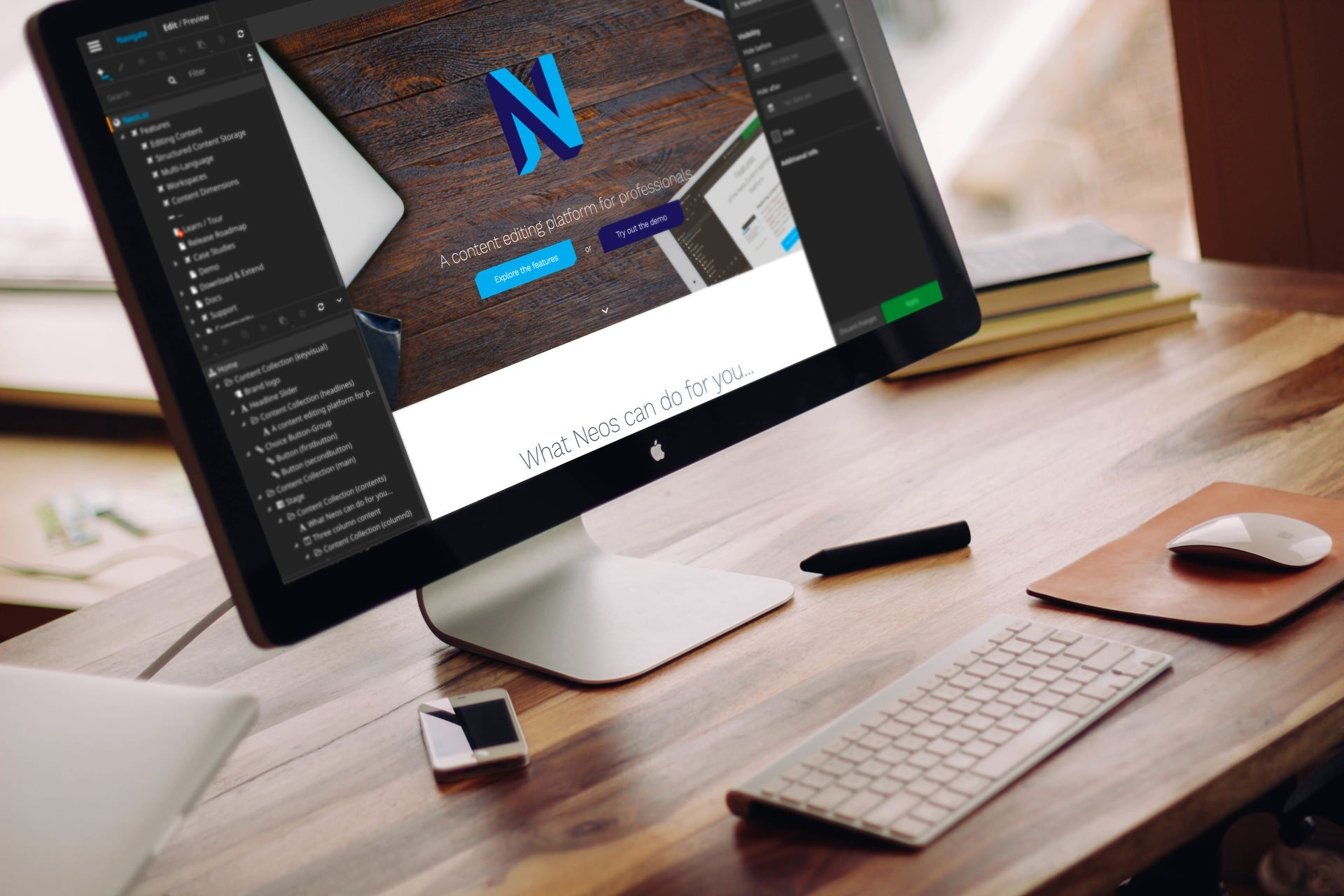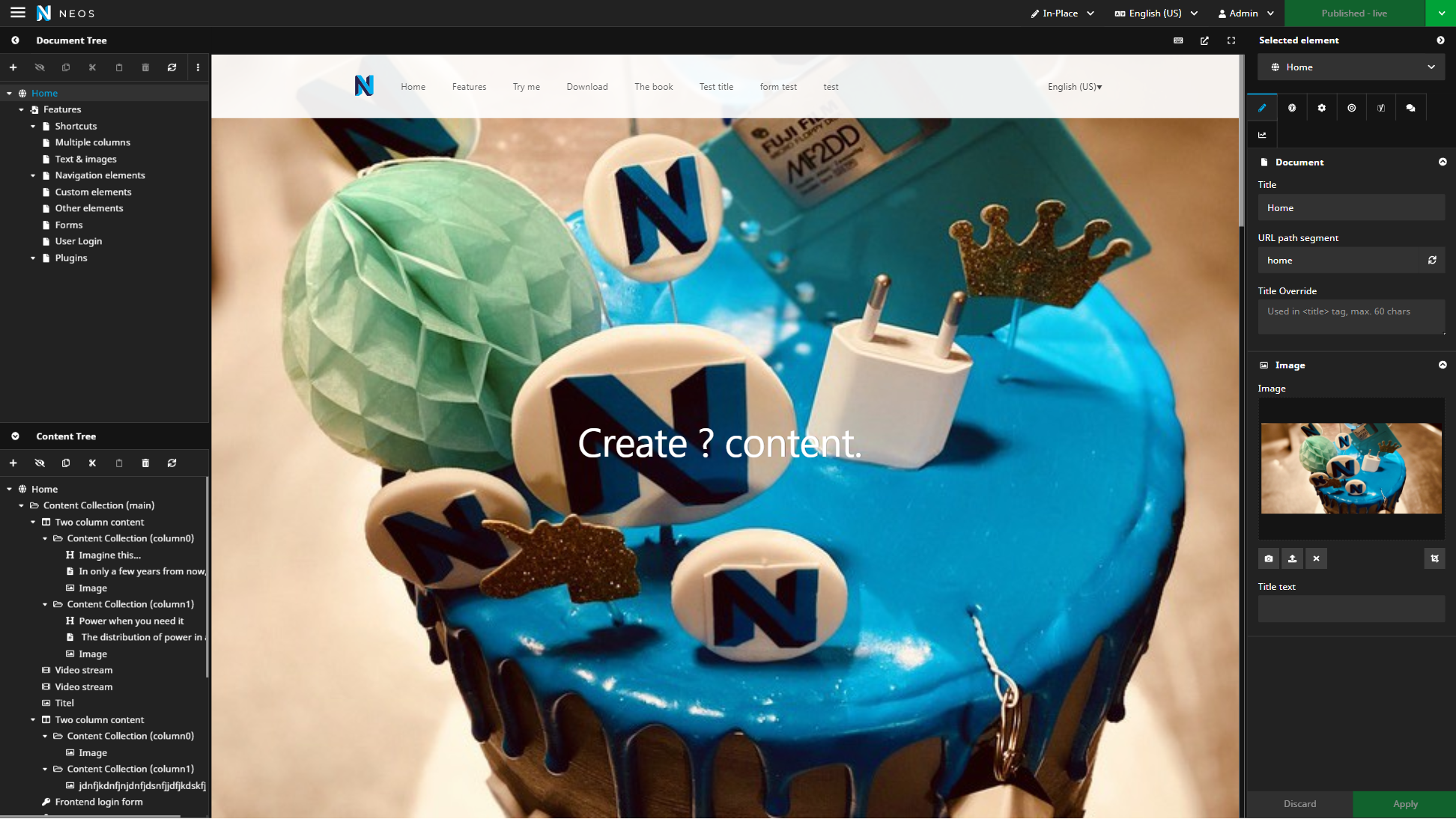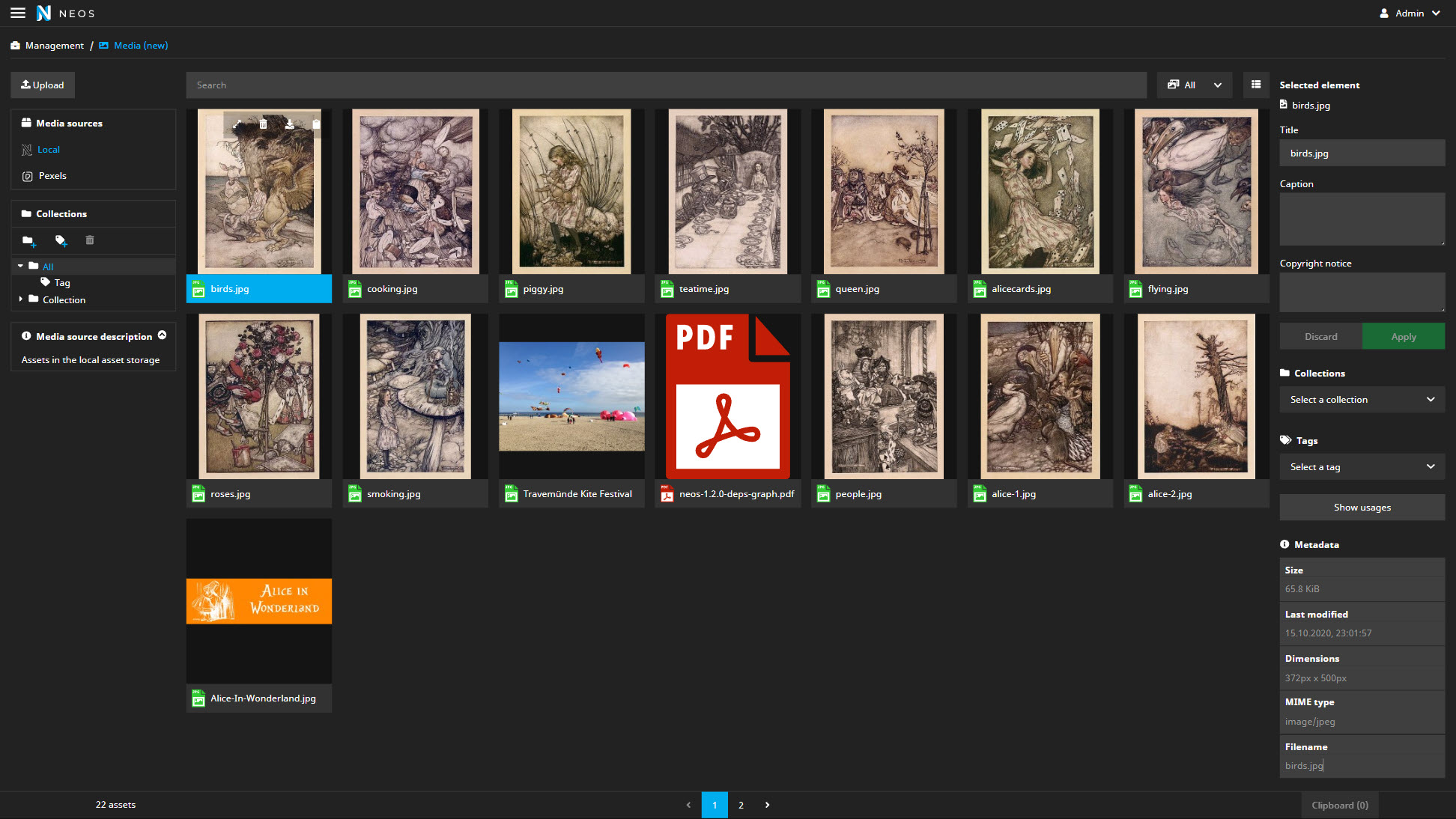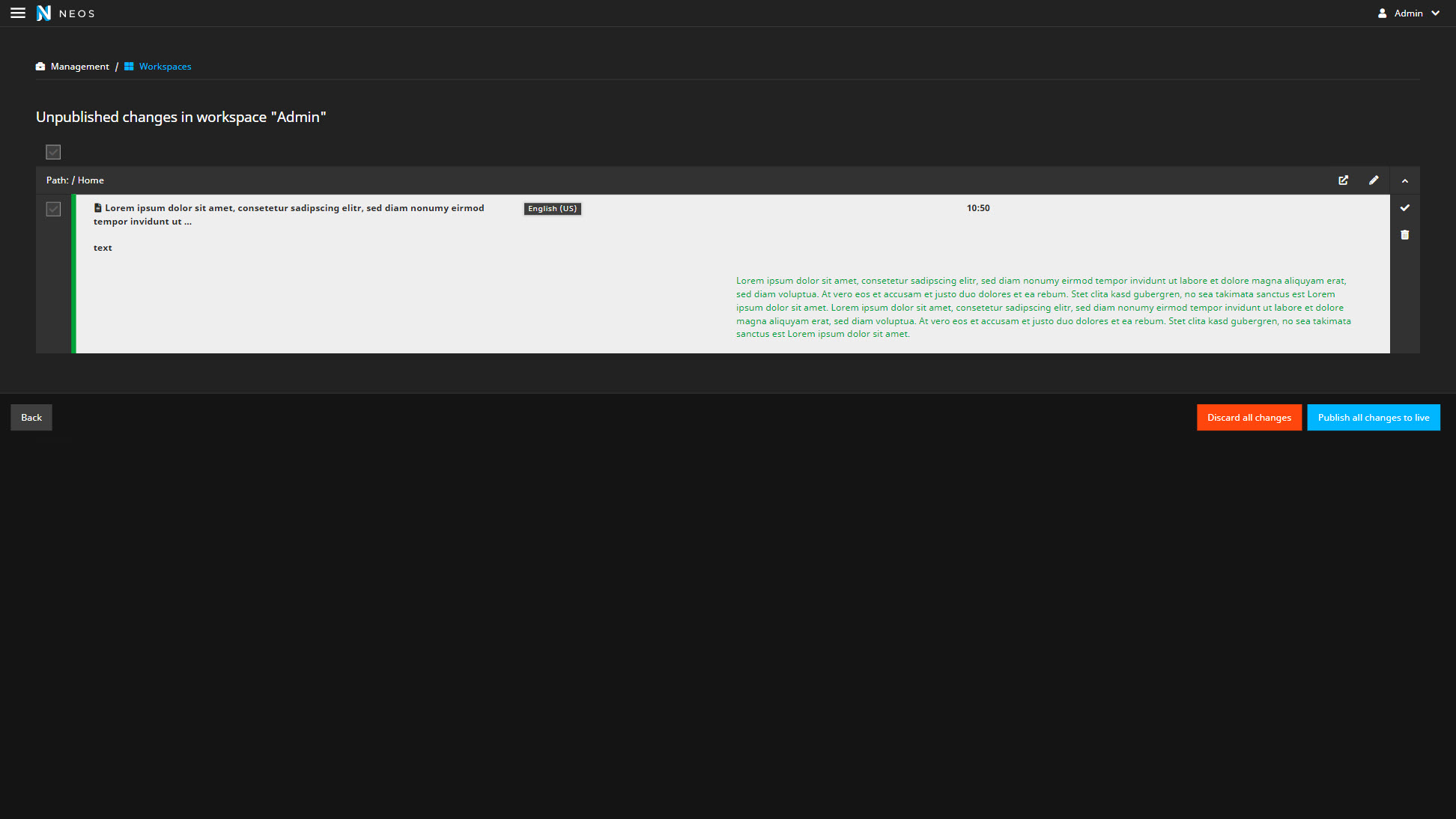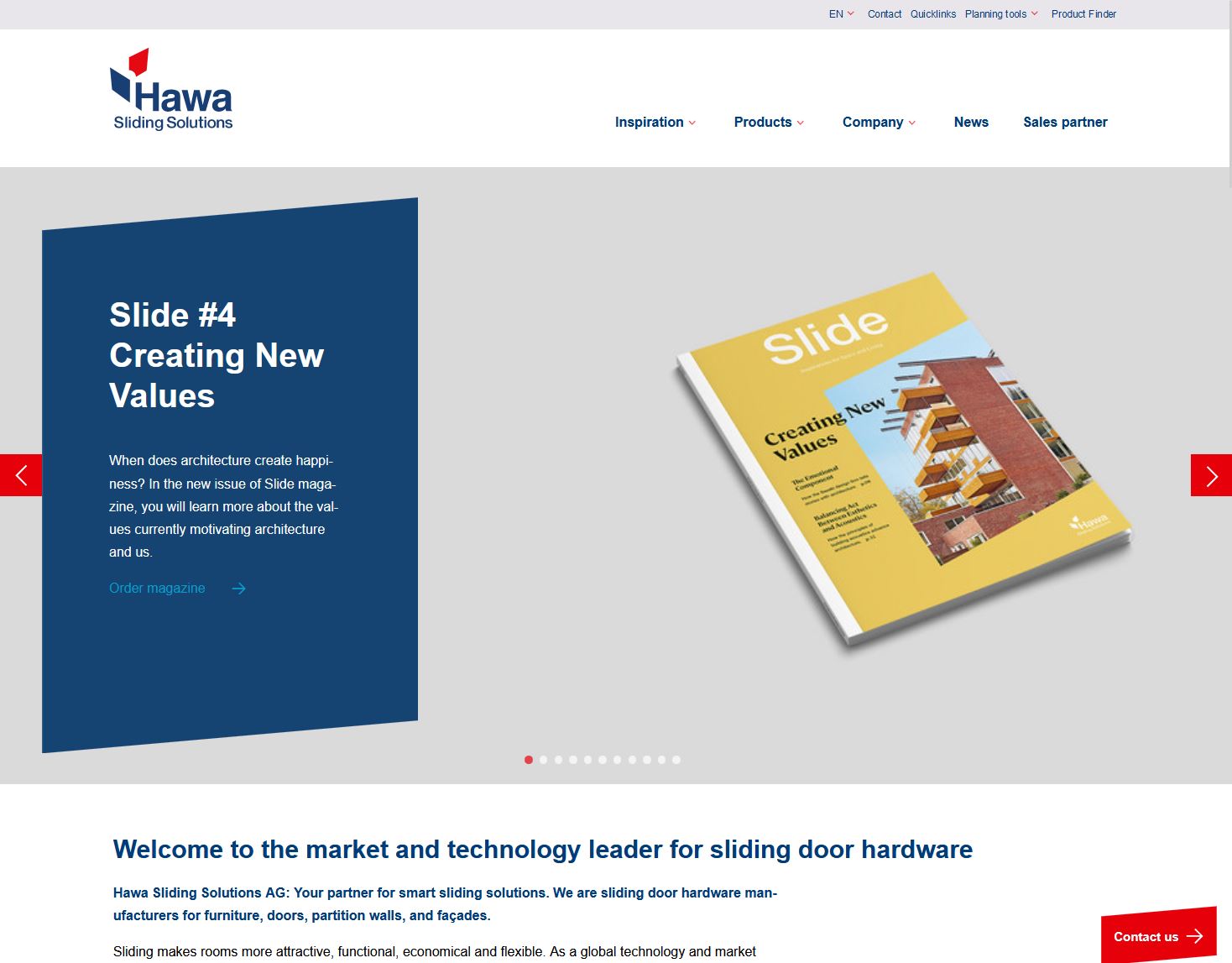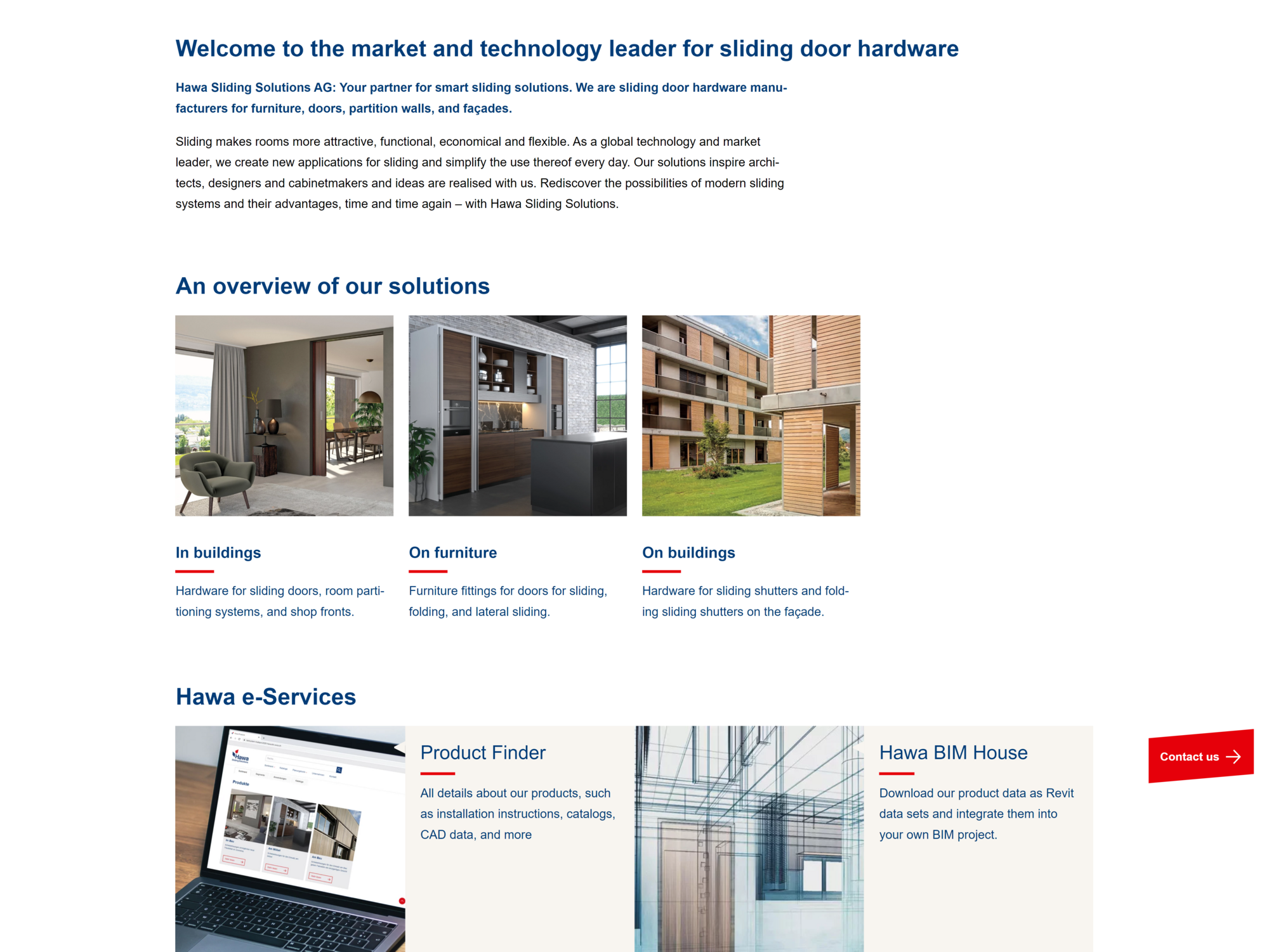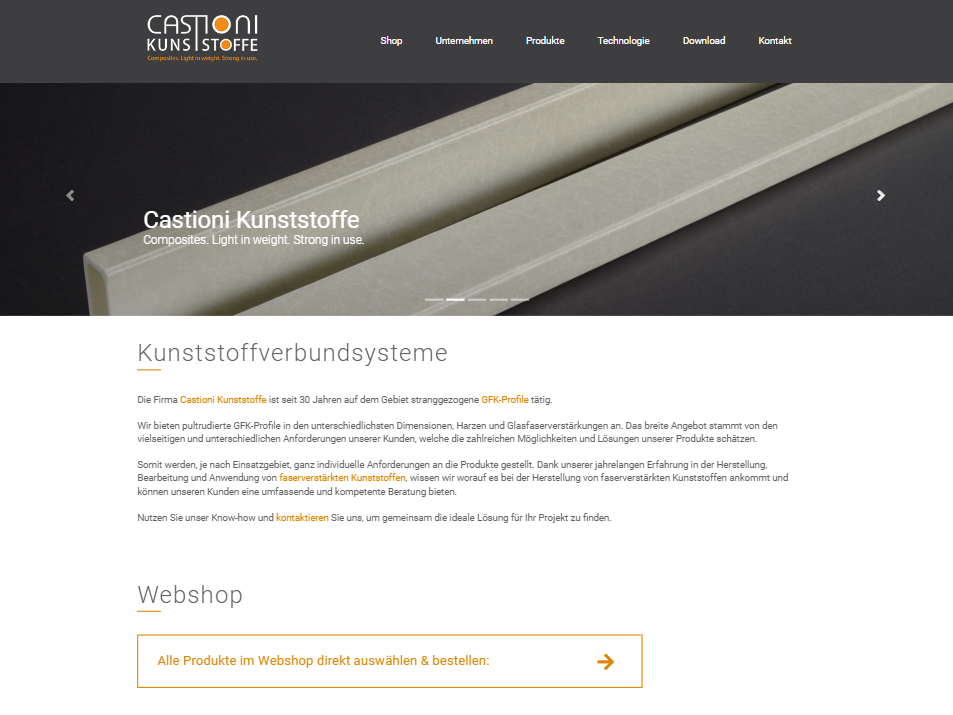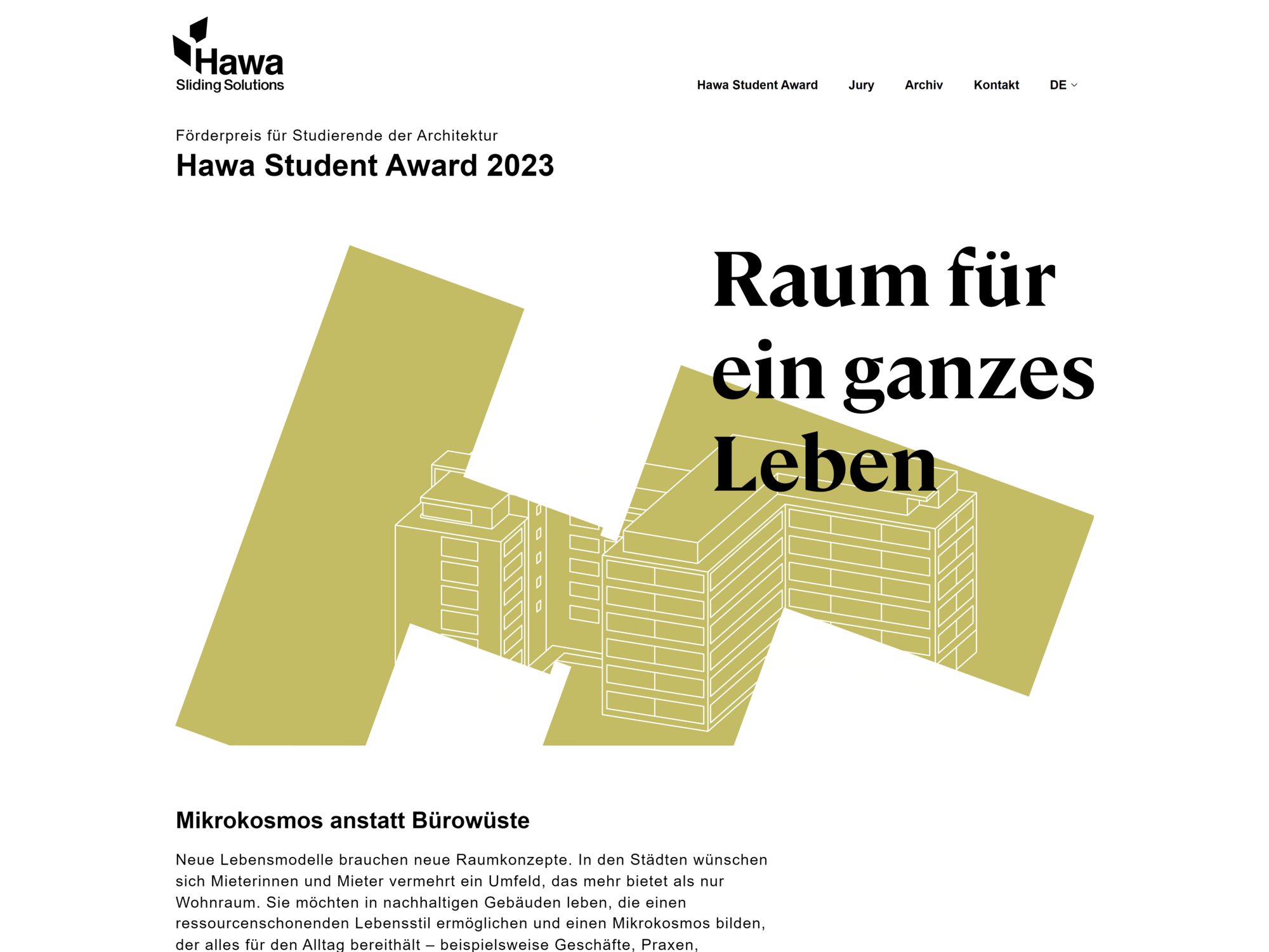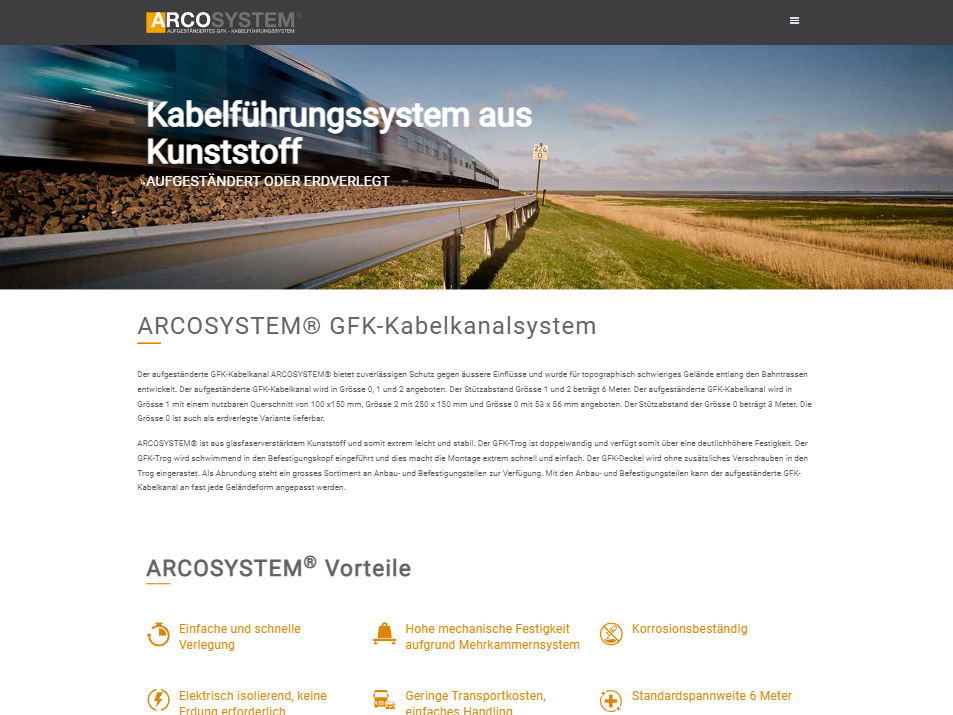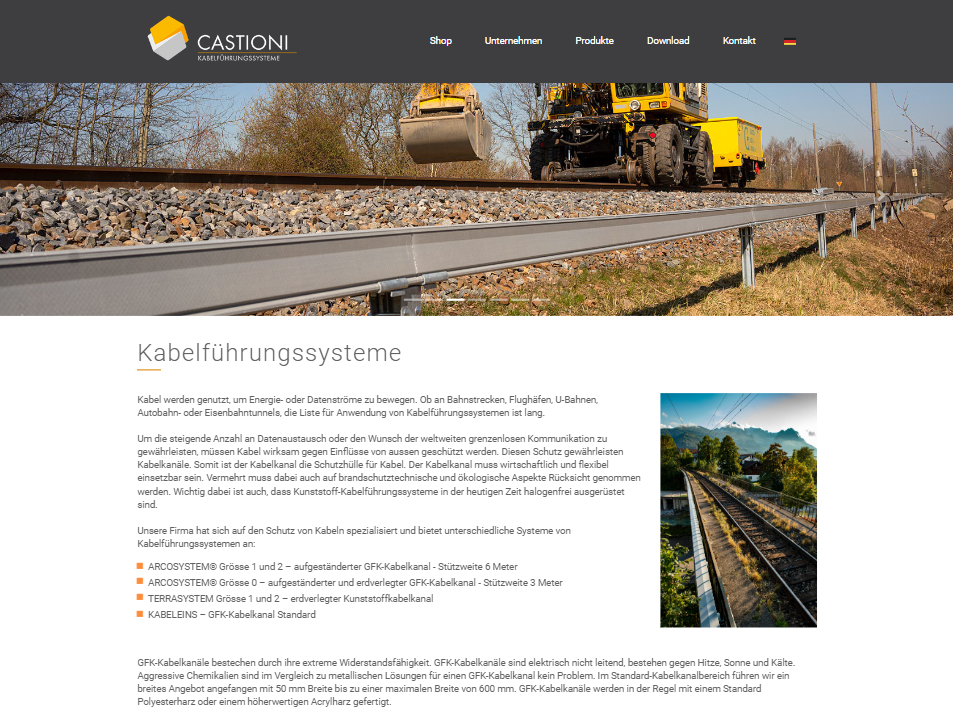Neos - The simple and intuitive content management system
Neos is a content management system that convinces with its simple, intuitive use. We use the NEOS content management system ourselves and are very experienced and satisfied with it - and soon your employees will be too!
We have been developing web solutions based on Typo3 for more than 20 years and know the CMS in all its facets. The content management system Neos, which emerged from the Typo3 community, has recently proven to be ideal for many requirements. It is much more user-friendly and intuitively structured. This results in less support effort. Neos offers flexible content structuring and is optimally optimized for target group-specific and regionalized content (language, country, target group). SEO tools are included as standard, as are personal and group-specific preview environments.
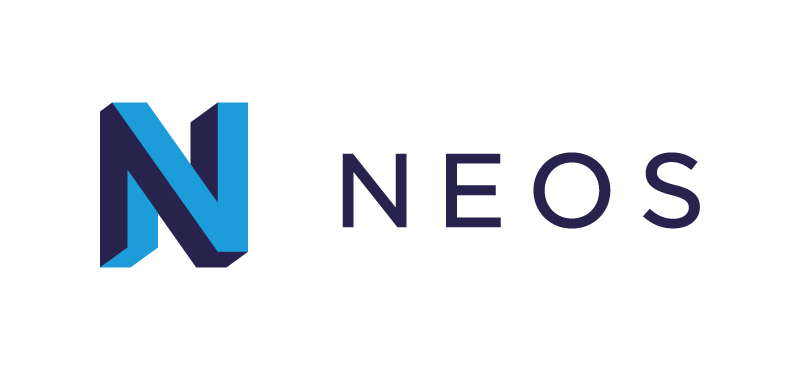
Why Neos CMS
Content, texts and photos are very easy to create with NEOS because they are largely self-explanatory. Anyone who can handle MS Office will also get along well with this CMS. The intuitive tree structure behind the website and each individual page simplifies work enormously.
Neos CMS wants to offer its users easy creation, editing and modification of web content. Among other things, this is done using drag-and-drop. In addition, the system is designed by developers for developers. This can be seen, among other things, in the possibilities for modeling user-defined content, in the planned extensibility and in the simple integration of third-party systems.
1. Real wysiwyg
With True WYSIWYG, you can make changes to your content in real time and see how it would look on your website even before you publish it.
2. Multilingualism in Neos
Create a central location for all your content in different languages to ensure coherent and consistent communication.
3. Kubernetes Docker
With its cloud-centric architecture, Neos CMS is ready to meet the challenges of today's cloud computing landscape.
4. Search engine optimization
Neos CMS is optimized for SEO from the ground up to ensure your content is found by search engines.
5. Work processes Workspaces and release processes
Neos CMS provides an intuitive user interface that enables editors to work efficiently and produce high-quality content.
6. Personalization, target groups, dimensions and A/B tests
With Neos CMS, you can create and manage complex marketing campaigns to effectively reach and engage your target audience.
7. Content Commerce
Neos CMS offers seamless integration of web stores to provide you with a coherent and efficient e-commerce system.
8. Openstreetmap Tile Server
Openstreetmap can be used to visualize complex data or information in a way that is easy for the user to understand.
9. Product comparison tables
With product comparison tables in Neos CMS, you can improve the user experience by giving your customers an intuitive and interactive way to compare products.
10. Microsoft Dynamics 365 CRM
With the API integration of Microsoft Dynamics CRM in Neos CMS, all relevant data can be synchronized centrally. This ensures that your customer data is consistent and up-to-date in both systems.
11. Magento Webshop API
Seamlessly integrate Magento with your Neos CMS environment and create a unified and powerful e-commerce ecosystem. With Magento Webshop API integration, you'll experience smooth transactions, improved user experience, and increased efficiency. Discover the new era of e-commerce with Neos CMS and Magento.
12. Vuejs frontend
Seamlessly integrate Magento with your Neos CMS environment and create a unified and powerful e-commerce ecosystem. With Magento Webshop API integration, you'll experience smooth transactions, improved user experience, and increased efficiency. Discover the new era of e-commerce with Neos CMS and Magento.
13. Livesearch - Elasticsearch
Leverage the power of Elasticsearch in your Neos CMS to improve your search capabilities, gain valuable insights from your data, and move your business forward.
14. PIM - Productfinder
Harness the power of an effective PIM system in Neos CMS. Optimize your product information, improve search, and ensure consistent and up-to-date data across all platforms.
15. BIM File
Discover the power of integrating BIM and Neos CMS - a game changer for the construction and engineering industry that sets new standards in efficiency, transparency and customer engagement.
16. Hotspotmap
Discover the power of interactivity with Hotspot Maps in Neos CMS. Increase engagement and improve user experience with exciting, interactive content.
17. Sales Partner
Keep track of all your channel partner information and use our interactive map feature to visualize your global network. By integrating Neos CMS with your existing systems, you can work more efficiently and achieve your business goals.
18. VOD - video streaming
The integration of video streaming and VOD (Video On Demand) into the Neos CMS provides an unparalleled experience for users and enables businesses to reach their audiences on a deeper and more personal level.
19. Structured data
Structured data allows you to provide search engines with detailed and contextual information about the content of your pages.
20. Template Kits
Nodetype kits are template sets built into Neos CMS that allow users to easily and quickly create new pages or content. A nodetype, or node type, is a core component of Neos CMS that defines what type of content can be displayed in a specific location within the website structure.
21. DXP platform
Neos CMS provides a Digital Experience Platform (DXP) that goes far beyond the functionality of a traditional Content Management System (CMS). The Neos DXP is designed to deliver personalized and consistent customer experiences across all touchpoints by integrating a variety of technologies and features.
References
Neos CMS Features
We individually analyze your needs and recommend the CMS that best fits your requirements. As a web agency, we are happy to support you with our know-how in the migration from Typo3 to Neos.
With Neos, you no longer have to awkwardly switch back and forth between the front-end and the back-end to edit content and control the changes. Because this CMS offers real "WYSIWYG". The keyword is inline editing. Edit the content intuitively exactly where it is displayed. Directly on top of the selected web page, the user interface is laid out as a tool. This means that you no longer waste time with cumbersome preview sequences.
Neos inherently offers much more than just the possibility of multilingualism. With the modern content dimensions approach, it is possible to manage multilingual websites, multiple branches in different countries, and much more. Editing content remains child's play with more complex structures and many languages. Discover now our expertise in Localization
Thanks to the latest SEO tools, the Neos CMS is also well equipped for the future. XML sitemaps, Canonical tags, Human Readable URLs, Schema tags, Yoast SEO plugin - all no problem.
Frontendbearbeitung, Gestaltungsfreiheit, Individualität: Neos CMS setzt auf Inhalt und Einfachheit. Mit dem modernen Content Management System, das aus der Weiterentwicklung von TYPO3 entstanden ist, realisieren wir je nach Projektanforderung und Bedarf deinen Webauftritt.
Da es sich bei Neos um ein Open-Source-CMS handelt, fallen keine Lizenzkosten an. Zudem bist du als Anwender:in in keiner Weise von einem Hersteller abhängig.
Das CMS Neos basiert auf einzelnen Paketen und lässt sich wiederverwenden. Bestehende Pakete können wiederverwendet und erweitert werden. Das ist projekt- und agenturunabhängig. Im Vergleich zu anderen CMS ermöglicht diese Struktur auch, dass Updates effizient und damit kostengünstiger durchgeführt werden können.
Änderungen an den Inhalten werden durch das Frontend Editing vereinfacht. Dazu musst du dich lediglich als redakteur:in auf deiner Website einloggen. Schon kannst du direkt auf Texte oder Bilder klicken, um sie zu bearbeiten oder um neue Elemente hinzuzufügen. Probiere es doch gleich selbst aus und fordere jetzt einen Demo Zugang an
Per Drag and Drop werden Bilder und Medien hochgeladen. Die Organisation über Tags und das Sammeln von Bildern in Collections (Themengruppen) bietet die Medienverwaltung.
Unternehmen haben unterschiedliche Zielgruppen. Diese haben unterschiedliche Bedürfnisse. Mit dem modernen CMS Neos ist es möglich, spezifische Inhalte für einzelne Kundengruppen, Sprachregionen oder Endgeräte zu erstellen. Beispiele: unterschiedliche Textlängen für Smartphone oder Tablet, unterschiedliche Inhalte für Privatkunden oder Geschäftskunden.
Bereits im Backend integriert ist ein praktisches SEO-Paket. Dieses unterstützt Redaktionen darin, alle wichtigen Angaben zur Suchmaschinenoptimierung korrekt einzutragen.
Workspaces bieten die Möglichkeit, Inhalte aufzubereiten, sie nach Themen geordnet zu speichern und in koordinierter Form zu veröffentlichen. In diesem Zusammenhang ist die Vergabe von unterschiedlichen Berechtigungen möglich: Beispielsweise können mehrere Personen Inhalte zu einem Thema zusammenstellen, die dann ein:e Webadministrator veröffentlicht.
Als bisher einziges System am Markt bietet Neos die Möglichkeit, mit sog. „Content Dimensions“ zu arbeiten. Diese frei konfigurierbare Abstraktion der Mehrsprachigkeitsfunktionalität ermöglicht die Erstellung beliebig vieler Versionen von Inhalten. Die Sprache ist nur eine davon. Eine andere kann beispielsweise die Zielgruppe sein. So kann die Redaktion z.B. für eine Google Adwords Kampagne eine speziell angepasste Version einer Landing Page mit Hilfe einer „Content Dimension“ erstellen.
Im redaktionellen Alltag kommt es häufig vor, dass ein Inhalt mehrfach bearbeitet werden muss, bevor er schließlich veröffentlicht wird. Durch die räumliche Trennung von Redaktions- und Produktionsumgebung lösen einige CMS dieses Problem. Einen anderen Ansatz verfolgt Neos mit sogenannten Workspaces. Jeder Redakteur erhält einen eigenen virtuellen Arbeitsplatz. Änderungen sind nur für ihn sichtbar. Wahlweise können die Inhalte dann direkt publiziert werden oder aber in einen Review-Workspace verschoben werden, um sie z.B. der Chefredaktion zur Freigabe und Veröffentlichung vorzulegen. Die Freigabe-Workflows können dabei durchaus komplexer sein, also mehrere Schritte durchlaufen. Da redaktionelle Arbeit auch bei grossen Internetangeboten Teamarbeit ist, bietet Neos auch die Möglichkeit der Arbeit in Team-Workspaces.
Auch wenn Neos von der Software und der Architektur her wenig mit TYPO3 gemeinsam hat, so hat die Neos-Community doch die Wurzeln und Konzepte von TYPO3 übernommen. So ist das System sowohl in der Lage, mehrere Internetseiten in einem System zu pflegen (Multi-Site), als auch die Inhalte der Seiten in mehreren Sprachen anzubieten (Multi-Language), und das schon von Anfang an. Grundsätzlich kennt das System keine Beschränkung hinsichtlich der Anzahl der Sprachen, in die ein Angebot übersetzt werden kann.
Neos ist ein relativ junges CMS. Daher wurde bei der Entwicklung von Anfang an an die Nutzung von Cloud-Angeboten gedacht. So ermöglicht das Medienmodul den Upload von Assets wie Bildern, PDFs, Videos etc. direkt aus der Redaktionsoberfläche in die Cloud und von dort die direkte Einbindung in die Inhalte. Dieser Prozess ist vollständig transparent gestaltet. Projektwebsiten können Beispielsweise leicht über Google Kubernetes in der Google Cloud betrieben werden, während die multimedialen Inhalte automatisch z.B. auf Microsoft Azure oder Amazon Web Services (AWS) gespeichert werden.
Neos setzt schon seit langer Zeit auf den Composer als Paketmanager, so dass das System sehr einfach mit jeder beliebigen Bibliothek von Packagist erweitert werden kann. Wer auf der Suche nach Erweiterungen speziell für Neos ist, kann diese auf der Website des Projekts finden und dann über den Composer installieren.Hier finden sich unter anderem Extensions für die Integration von IBM Watson (künstliche Intelligenz) für die Analyse von Texten nach Ton, von Elasticsearch, sowie von Google Analytics. Vor allem letztere lässt sich sehr eng mit Neos verknüpfen, so dass die Daten aus Analytics direkt auf der entsprechenden Seite in Neos angezeigt werden.
Neos hat eine sehr umfangreiche Kommandozeilenschnittstelle (Command Line Interface, CLI) für Entwicklerinnen und Entwickler sowie Administratorinnen und Administratoren zur komfortablen Installation von Neos, aber auch zur Durchführung von Backups und Datenbankmigrationen. Damit ist eine vollständige Automatisierung von Rollouts und Betrieb sowie die Nutzung moderner Techniken wie Continuous Integration und Deployment in Neos-Projekten möglich. Um projektspezifische Aufgaben unterbringen zu können, ist das CLI durch eigene Kommandos erweiterbar. Darüber hinaus lässt sich das System leicht in bestehende Strukturen und Architekturen integrieren, da es MySQL, Postgres, Oracle und Microsoft SQL unterstützt.
